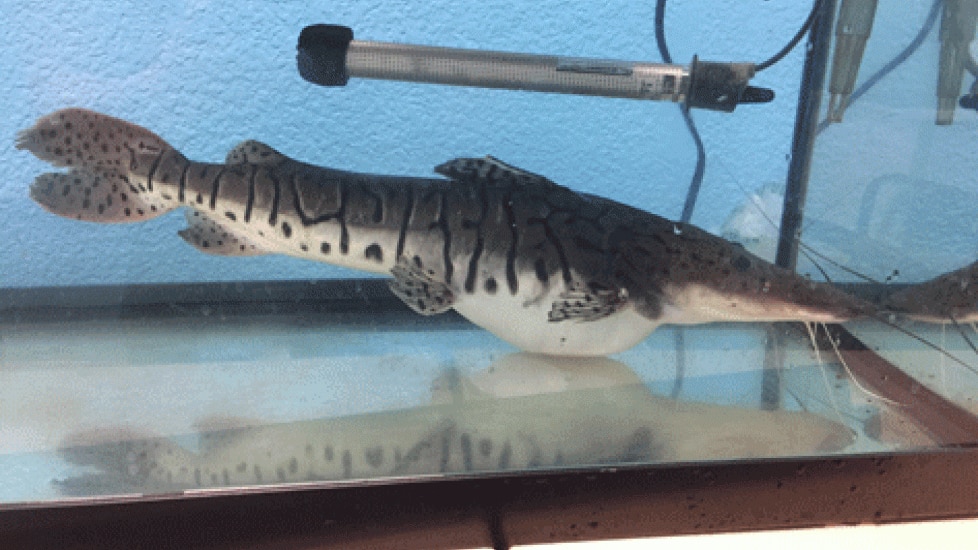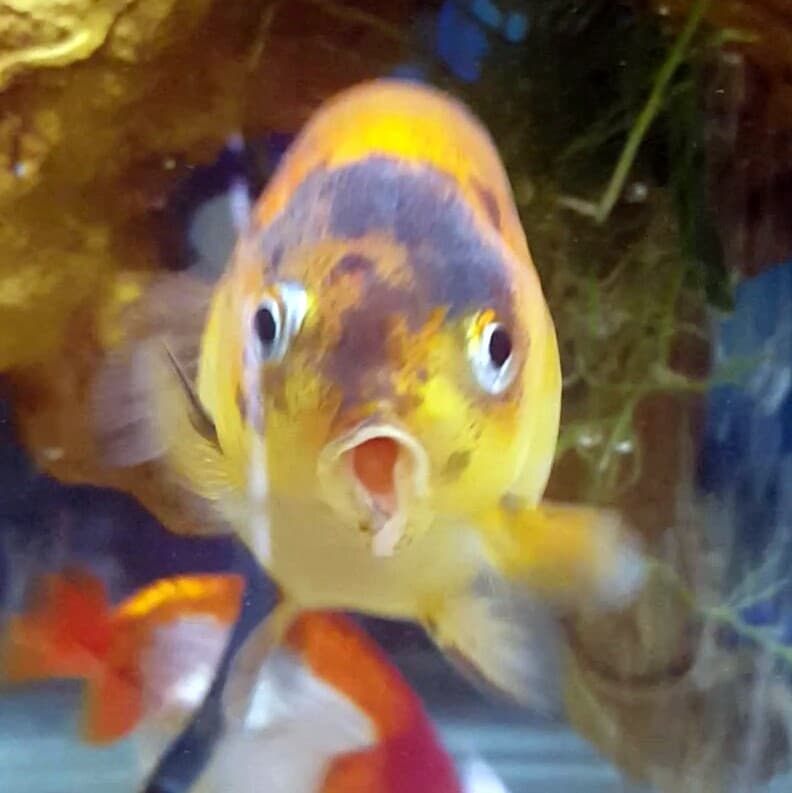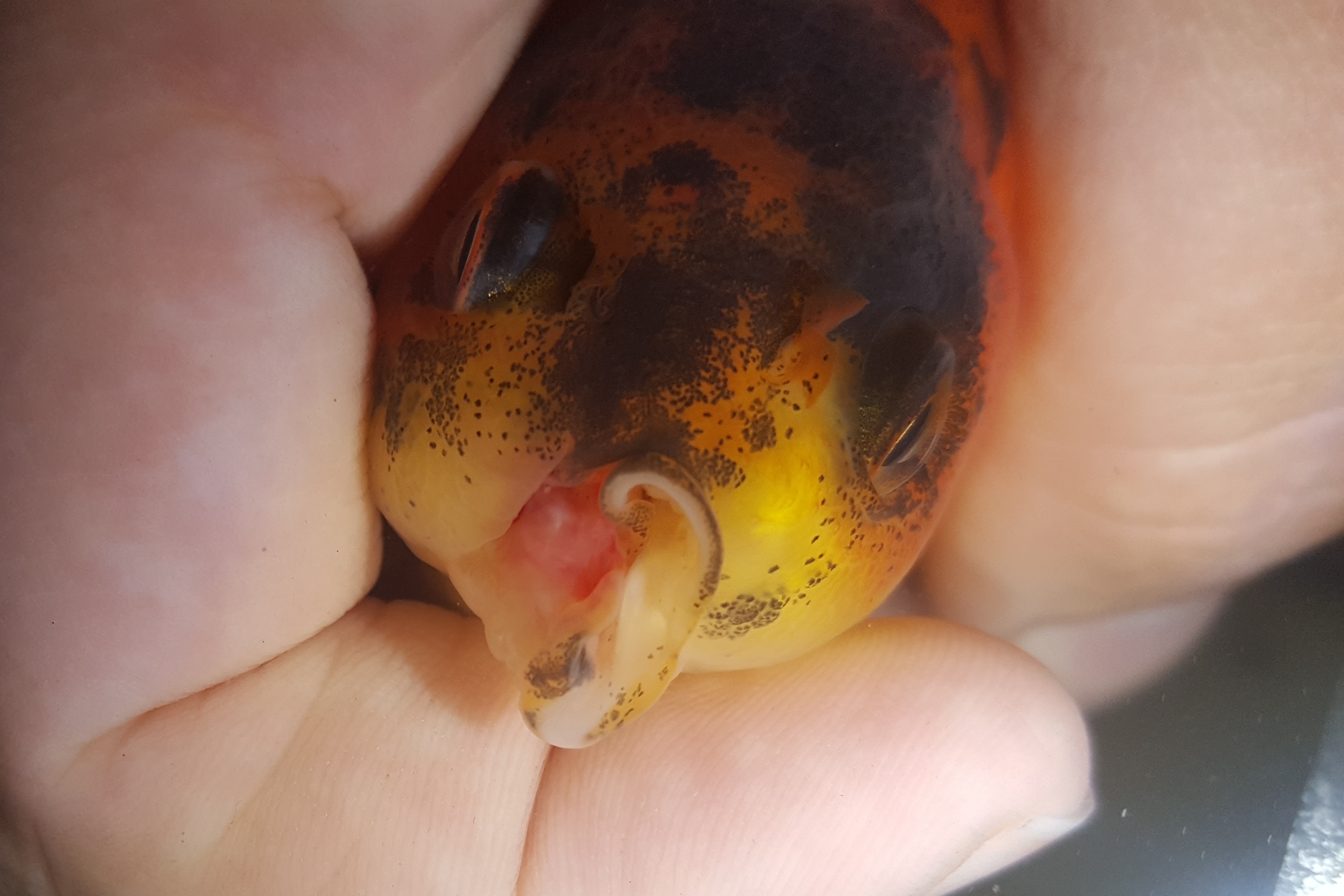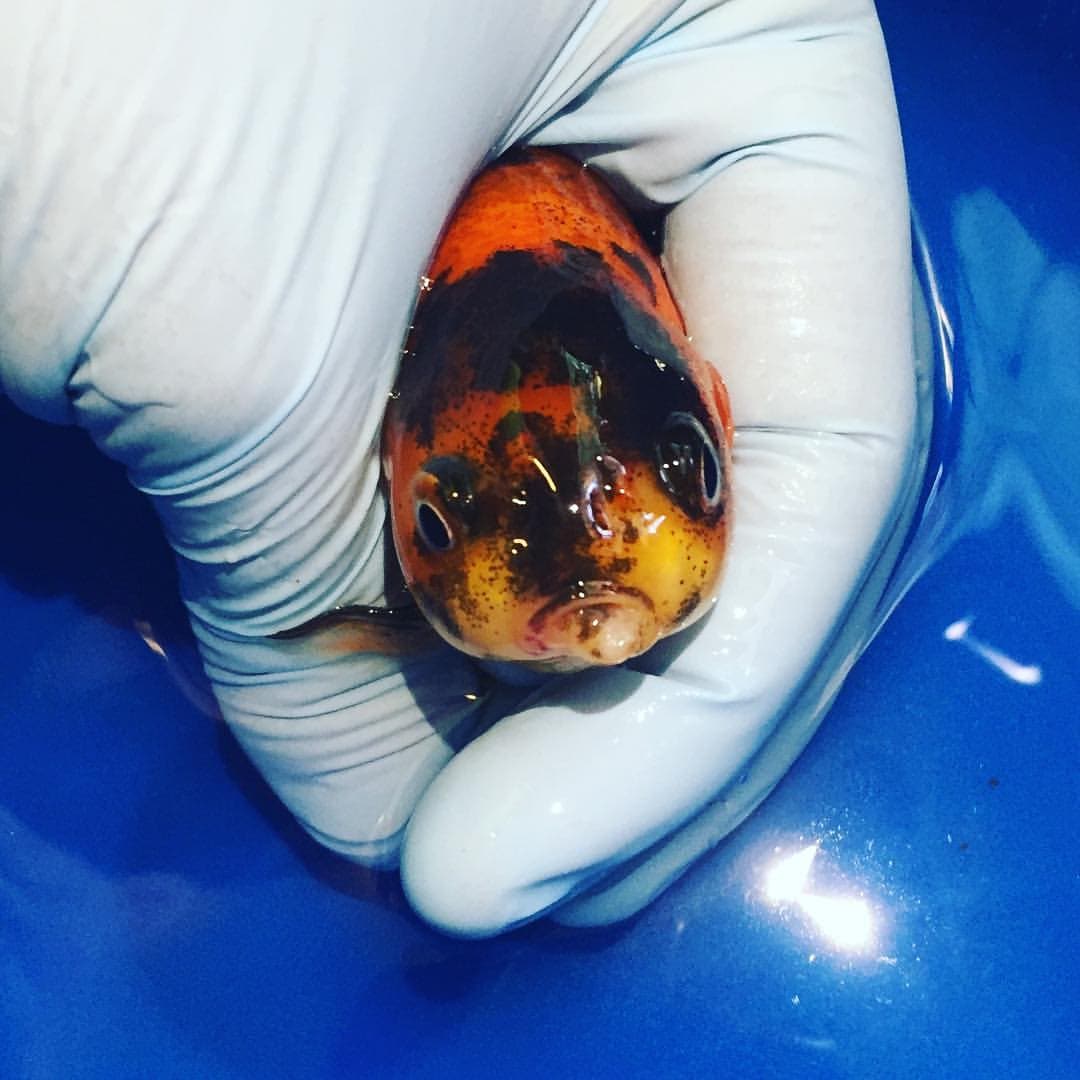Amazing Fish Surgery Cases
By Jessie Sanders, DVM, CertAqV
Yes, even fish can undergo surgery. Be they small goldfish or large sharks, all species of fish can be diagnosed with conditions that require the need for surgery. Surgeries are not conducted under water, of course; most procedures are performed with the fish mostly out of the water, with anesthetized water flowing over their gills.
Here are some of the amazing fish surgery cases that are being done.
Broken Jaw Repair for Lemon the Goldfish
Figure 1: Lemon prior to her oral injury
Lemon, a fancy Ranchu Goldfish, presented to Aquatic Veterinary Services following a feeding session. During the feed, the right side of Lemon’s mouth collapsed into her oral cavity. Prior to the injury, Lemon had some oral deformities that had been with her since birth.
Figure 2: Lemon upon presenting to Aquatic Veterinary Services
Now, what to do for a 2-inch goldfish with a broken jaw? First, a specialty surgery bed made with bubble wrap was made for Lemon to lie on her left side.
In order to ventilate her and keep her anesthetized during surgery, airline tubing was added to a 60-milliliter syringe to be hand-administered. A staff member was pulled in just to keep the syringes full.
Figure 3: Dr. Jessie Sanders, right, sets Lemon for surgery while assistant, Sara Enos, left, administers anesthesia
Once Lemon was on the surgery table and ready for the procedure, the veterinarian considered tacking the corner of the jaw to the side of Lemon’s mouth, but there was not enough skin to attach the sutures to. Two small sutures were placed along the side of Lemon’s mouth to hold her jaw open.
Figure 4: Lemon with the sutures in the side of her mouth post-surgery
Following the procedure, Lemon was given pain medication and kept for a few nights in the hospital to monitor her healing and appetite. After a few days, she was allowed to return home and continue healing in her home tank with her buddy.
Figure 5: Lemon two weeks after surgery with the sutures removed
Two weeks post-procedure, the veterinarian went to see Lemon and take the sutures out. Following the removal, Lemon’s jaw was healed and no longer deformed.
Rocky, the Fish that Eats Rocks
Figure 6: Rocky with a belly full of rocks
You know those Golden Retrievers who eat everything in sight? Well, Rocky is the fish equivalent of a Golden Retriever. Rocky is a Shovelnose Catfish with a compulsion to eat the rocks in the bottom of his tank. From a 1/2-inch to over 1-inch, no rock was safe from Rocky’s maw.
Rocky ended up eating so many rocks that he started to resemble a sandbag. As you can imagine, he eventually could not swim.
Rocky was anesthetized and, given his size, placed on the large fish surgery table, where an incision was made through the skin and into the stomach. There were so many rocks in Rocky’s stomach that it took several minutes for the veterinarian to remove all of the rocks using a pair of surgical tweezers. Some of the rocks in the stomach actually started sliding out of the mouth as a result of the internal manipulation.
When all was done and the rocks were weighed, the vets at Aquatic Veterinary Services found that Rocky had ended up consuming over a pound of rocks!
Figure 7: The stomach is visualized to pull out the rocks
Once Rocky was “rockless,” the stomach and tough skin were sutured closed. After a few days under observation, Rocky went home to his now sandy — and rock-free — bottomed tank.
Figure 8: Rocky with his pound of rocks
But that was not the last we saw of Rocky. One of his nosy plecostomus roommates decided that Rocky’s incision looked appetizing and decided to nibble it open. Rocky was returned to Aquatic Veterinary Services for a re-suturing and to stay until the incision was healed and the sutures removed.
Sparky's Eye Tumor
Figure 9: Sparky and his considerably sized tumor
Fish often present to aquatic veterinarians with ocular (eye) tumors. They range in all shapes and sizes and can cause considerable problems for fish. Not only does the drag of a tumor cause negative buoyancy while swimming, the fish, disturbed by the weight of the tumor, will try to knock it off. In the process of knocking its head against objects to rid itself of the tumor, the fish can harm itself to the point of suffering neurologic damage from head trauma.
The best treatment for ocular tumors is to remove the eye entirely. Fish in captivity get along just fine with one eye, or even no eyes. They can smell their food using their nares, and their specialized lateral line organ helps them to sense the sides of their pond or tank and their buddies around them.
Sparky, a Comet Goldfish, presented to Aquatic Veterinary Services with a rather large tumor on his right eye that had been progressing slowly over a few months. Due to the size of the tumor and the hinderance on his swimming, Sparky’s owner elected to schedule him for surgery to remove the eye and the growth.
Figure 10: Sparky post-surgery happy to be tumor-free!
Sparky was anesthetized, and the eye and tumor were very easily removed. Enucleation, or eye removal, in fish proceeds very similarly to eye removal in other species, but with no eyelid to close over the eye socket, the orbit is left exposed to the water. Good water chemistry is therefore essential for proper healing of all surgical wounds.
Figure 11: Sparky one-year post-surgery
Following recovery, Sparky was happily swimming around his tank, free from the growth. Many fish undergo a very excited period of swimming following recovery from tumor removal due to the lack of drag. One year later, it appears that Sparky never had an eye there at all.
*
Surgery can greatly influence a fish’s well-being and health. If you are concerned about an odd growth, appearance, or behavior in your fish, ask your local aquatic veterinarian to check it out. Treating these cases early greatly improves the prognosis that your fish will have a long and happy life.
All images provided by Dr. Jessie Sanders, DVM, CertAqV




